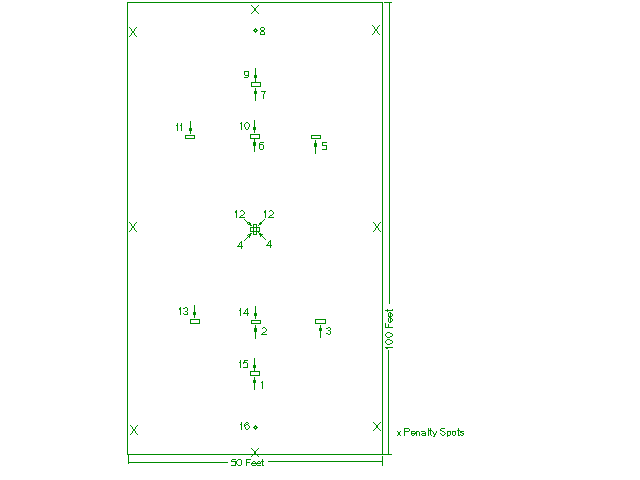

KY Nine Wicket Layout
Court and Equipment Characteristics:
Smooth Clay court - very fast speed.
Wickets set in Concrete and buried under the clay.
Steel wire is used to mark the court boundary.
Wickets only slightly taller than the ball - not possible to jump overtop a ball.
Balls are smooth in texture, solid and similar in weight to a Jacques Eclipse ball.
Notice the layout with hoop 3 level with hoop 2. Start about 6' back from hoop 1.
The mallets are custom made. The mallet face consists of two playing surfaces, one hard surface called fiber and one soft surface made of rubber.
The handles are generally short, though many new mallets are made using longer handles.
Clips and deadness boards (or a clipboard with a deadness sheet) are used only during tournaments.
Clocks are generally not used, unless players are waiting to play. During tournaments, a 3-5 hour time limit is set for a best of three match.